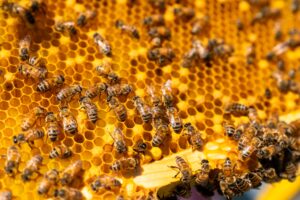ECU nutritionist Dr Ruth Wallace says kids could be picking up preferences for foods high in salt, sugar and fat from daycare.
Ruth interviewed more than 80 childcare workers and reviewed almost 1200 comments on the Support Nutrition for Australian Childcare (SNAC) website as part of her PhD research.
“We saw an awful lot of discretionary foods on the menus,” she says.
“By discretionary foods we mean… you’ve probably heard the term ‘sometimes’ foods, so those that are high in energy but low in nutrient value.”
HOW OFTEN IS SOMETIMES?
Ruth says some childcare workers didn’t understand what discretionary foods were.
Sausages, for instance, appeared on a lot of menus but are technically a discretionary food because they are high in fat and sodium.
And there was real variation in childcare workers’ interpretation of ‘sometimes’.
Some thought those foods could be eaten once a month while others thought it meant once a day.
A TASTE FOR SUGAR AND SALT
“Ultimately it means that children are getting used to having these foods, they’re developing a preference for these foods,” Ruth says.
“There’s a heap of research out there that says that overconsumption of these ‘sometimes’ food can lead to [excess weight] and obesity, and then subsequent health problems later in life.”
Ruth says many childcare workers believed cakes and biscuits were ok if they were homemade, even though they were high in fat and sugar.
Another concern was Vegemite and jam spread on crackers, crumpets or rice cakes.
“I appreciate that they’re usually only very, very small amounts that they’re using but we’re thinking about developing those taste preferences,” Ruth says.
“Vegemite is very salty and jam is very intensely sweet, so again it’s sort of training the children’s taste buds to want to seek out those types of foods.”
IN THE LONG RUN
Ruth says there is no shortage of studies showing the detrimental effects of junk food on children’s growth and development.
She says eating well in the early years has been linked to a higher IQ, better academic performance and a reduced risk of hyperactivity.
This is on top of the increased risk of chronic diseases associated with excess weight.
“One in four young children are overweight [or] obese and that has a tendency to stay with them into adulthood,” Ruth says.
RECIPES FOR CHILDCARE WORKERS
Ruth says it’s important to acknowledge the wonderful work that childcare workers do.
She says food is one of many aspects they have to deal with day-to-day, and has developed the SNAC website to help.
The site contains fact sheets, such as ideas for morning tea.
There are also cakes and muffins that all incorporate a fruit or a vegetable and have minimal fat and sugar.
“We’re not just saying ‘this is the problem’, we’re saying ‘this is the problem and here’s the solution’,” Ruth says.







